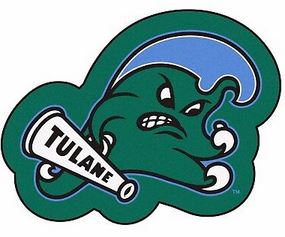Podcast: Play in new window | Download
Subscribe: RSS
With hurricane season still upon us, the Atlantic Ocean and Gulf of Mexico remind us to beware of the sea. For one relatively small private school in New Orleans, the water seems just fine in October, 2022.
The Tulane Green Wave is making their presence known on the football field this year.
After a forgettable 2-10 year in 2021, the Green Wave is off to a red-hot start this season.
Tulane has come out of the gate 4-1. The Greenies went to Kansas State and handed the 4-1 Wildcats their only loss of the season. Last Friday night, Tulane won a 27-24 overtime thriller at the University of Houston in a nationally televised game.
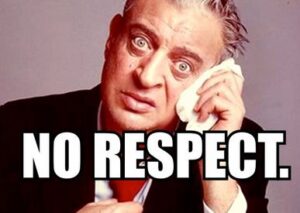
Though Tulane still gets no respect from the Associated Press Top 25, the Green Wave has moved up to #18 in the prestigious SwampSwamiSports.com Top 25 rankings this week.
On Saturday, the Green Wave will again play on national television when American Athletic Conference rival East Carolina (3-2) comes to New Orleans. The game will be featured on ESPNU with a 2:30 PM kick-off.
The Tulane football team is currently tied for first in the AAC with perennial powers Cincinnati and Memphis. The Green Wave will host the Memphis Tigers on October 22 and play at Cincy to end the regular season on Friday, November 25.
TULANE FOOTBALL HISTORY
Tulane has a surprisingly long history of playing college football.
The school’s first football season was in 1893. Since then, Tulane has played football in every season including during World Wars I and II. Initially known as the Tulane Olive and Blue, the school newspaper editor wrote a song about the “Rolling Green Wave” in 1920.
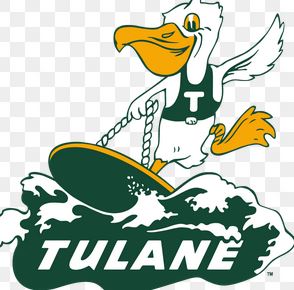
Tulane’s team’s logo became a Louisiana pelican straddling a surfboard atop a big green wave. The school retained this logo for nearly fifty years.
In 1933, Tulane was a charter member of the initial Southeastern Conference. The Green Wave won the SEC three times in 1934, 1939, and 1949.
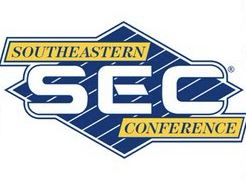
In 1949, Tulane’s average home football attendance of 37,058 per game led the country.
While football prospered at the lovely campus on St. Charles Street in the Uptown district of the Crescent City, the school’s academic record was taking a reputation hit. Tulane was handing out nearly 100 football scholarships every year. More than half of the football players were majoring in physical education instead of more rigorous academic pursuits.
In 1951, Tulane’s new president, Rufus Harris, decided to make some big changes.
He instituted a football scholarship reduction to 75, reduced the salaries of the coaching staff, and forced football players to major in something other than PE (which was reduced to a “minor” at the school). Incoming athletes were expected to take classes more representative of Tulane’s general student body.
After that edict, Tulane’s football team had trouble fielding enough athletes capable of meeting the school’s new academic requirements.
The Green Wave posted just one winning season (6-4 in 1956) during the next 14 seasons from 1952 through 1965. As the rest of the SEC started to flourish, Tulane’s football program struggled to compete.
Some of Tulane’s leadership talked of starting a new “Southern Ivy League” athletics conference involving academic-minded institutions such as Duke, Vanderbilt, Rice, and other smaller private schools. Unfortunately, the other universities decided to stay put and reap the financial benefits of participating in their current athletic conferences.
In 1965, Tulane’s leadership committed the school’s biggest athletics blunder.
Tulane opted to leave the SEC after the 1965 season.
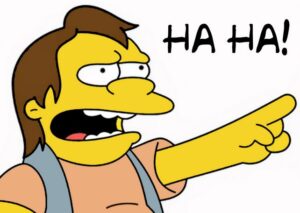
Tired of spending years as an SEC bottom dweller from the 1950’s into the middle 1960’s, Tulane University decided to become an independent. The school hoped to draw more interest from potential student athletes from all around the country rather than simply being considered a Southern school.
In 1965, Tulane’s President Herbert E. Longenecker suggested that the university might “be better served by scheduling intersectional games.”
Tommy O’Boyle, the Green Wave football coach at the time, added, “It sure can’t do us any harm. Tulane is a national university. Now we can play a national schedule.”
Local football fans knew better, though.
In the ensuing years, Tulane’s football program suddenly lost its identity and struggled to remain relevant. The Green Wave football team rarely posted a winning record or bowl appearance after leaving the SEC following the 1965 season.
GOODBYE, TULANE STADIUM!
Tulane’s on-campus football stadium (which had hosted the Sugar Bowl game and three of the earliest Super Bowl games) had grown old and dangerous in the oppressive New Orleans humidity. Old Tulane Stadium (built in 1926) was torn down for safety concerns during the late 1970’s.
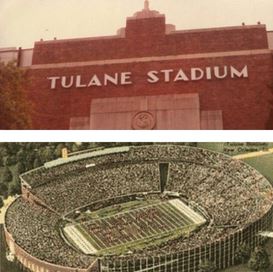
The Green Wave football program agreed to play its home football games in the new (but cavernous) Louisiana Superdome. The team rarely had enough local fans in attendance at the indoor facility to make for much of a “dome” field advantage during college football games.
Things became so bad at Tulane that the school nearly disbanded the football team altogether in 1985!
Coach Mack Brown (a young coach hired at age 33) had just become Tulane’s newest head football coach in 1985. After arriving in New Orleans for his new job, he expected to have 59 returning football players. He would later learn that 41 of those student-athletes had been placed on academic probation by the university.
A fourteen member commission spent an agonizing year mulling whether Tulane should end its football program.
One vote ended in a 7-7 tie. A consulting group (which included legendary University of Texas football coach Darrell Royal) finally convinced Tulane’s overseers to recommit to the football program and give it another go.
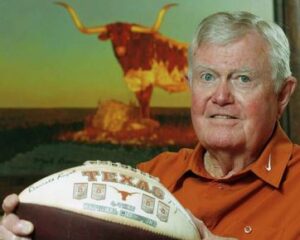
During that difficult year, Coach Royal reportedly told the young Mack Brown, “You have no chance competing against that large state university in Louisiana. I’d get out of here as fast as I could if I were you.”
Fortunately for Tulane, Mack Brown stayed for three football seasons. After posting a 1-10 record in his initial season, the enthusiastic young coach improved to 6-6 in his third year. Brown’s 1987 Tulane team earned a spot to play in Shreveport’s Independence Bowl against the Washington Huskies.
After that game, Mack Brown followed Coach Darrell Royal’s advice. He left Tulane to become the head coach at the University of North Carolina.
It became so bad at Tulane (how bad was it?) that even the school’s marching band had “disbanded”.
Nearly thirty years later in 2003, a group of interested Tulane students formed a 60-piece volunteer marching band to help generate more excitement at the school’s football games.
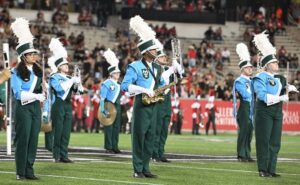
In the past two decades, the Tulane band has slowly grown to about 100 student members.
HELLO, YULMAN STADIUM!
Another significant “push” benefiting the Tulane football program came in 2014 with the construction of a new on-campus football stadium. Thanks to some wealthy local benefactors, a new right-sized football stadium was built on the school’s campus.
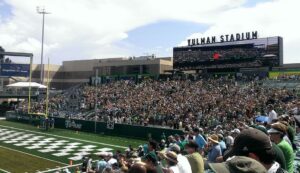
The new 30,000 seat Yulman Stadium opened in 2014 at a cost of $55 million. A generous $15 million gift from the Yulman family (founder of Serta mattresses) plus a $7.5 million donation by New Orleans Saints owner, Tom Benson, helped kick-start the local fundraising effort. Tulane’s new football stadium was financed entirely by private donations.
The next step in Tulane’s football rebirth happened in 2016. Willie Fritz was hired to become the school’s 40th head football coach.
Coach Willie Fritz had a reputation as a program builder. He led Sam Houston State University (Huntsville, Texas) to a couple of national runner-up finishes in the FCS championship games of 2011 and 2012.
Fritz then accepted the head coaching job at Georgia Southern of the Sunbelt Conference. During his first two seasons, the football team went 9-3 and 8-4 including the school’s first bowl appearance.
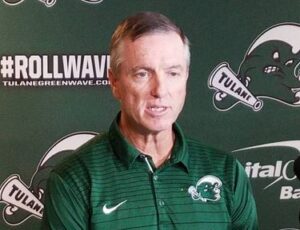
Coach Fritz was offered the Tulane job in 2016 in hopes that he would be able to do the same thing for the Green Wave football program. Tulane has become quite competitive during the coach’s first six years in New Orleans as the Green Wave has played in three bowl games.
In 2022, 4-1 Tulane is off to one its best starts in decades.
The students are excited again. The local alumni are excited, too. This Saturday, Yulman Stadium will be at capacity for a nationally televised home game against conference rival East Carolina. The Tulane marching band will be there to help rev-up the crowd and perform at halftime.
Yes, Tulane’s football program, which was nearly cancelled in 1985, has finally found its way once again.
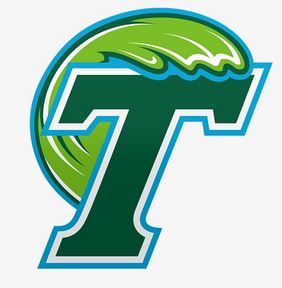
It has discovered a new and more comfortable athletics niche. Though Tulane University no longer competes against LSU and Alabama on a regular basis, the school’s football team certainly wouldn’t back down if offered a chance to play them, either.
The Tulane Green Wave football program is back and on a major roll! Cowabunga!

